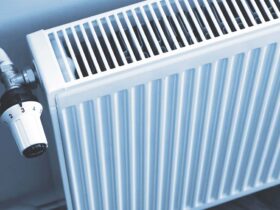The fuel pump fuse is responsible for providing power to the fuel pump in a vehicle. When the fuse blows or fails, the fuel pump will not receive any power, resulting in the engine not starting or stalling while driving.
The fuel pump fuse is an essential component of a vehicle’s fuel system. This small but crucial part ensures that the fuel pump receives the necessary power to function properly. Without the fuel pump fuse working correctly, your vehicle may refuse to start or shut off unexpectedly while driving.
Understanding the role of the fuel pump fuse and knowing how to identify and fix any issues related to it is essential for maintaining your vehicle’s performance and reliability. We will explore the importance of the fuel pump fuse, its symptoms of failure, and steps to troubleshoot and replace it if needed. So, let’s dive in and learn more about the fuel pump fuse and its significance in your vehicle’s fuel system.
Common Signs Of A Faulty Fuel Pump Fuse
Common Signs of a Faulty Fuel Pump Fuse
Car Stalling
If your car stalls frequently, it could be a sign of a faulty fuel pump fuse.
Check the fuse to ensure proper functioning and prevent further stalling issues.
Issues Starting The Engine
Difficulty starting the engine may indicate a faulty fuel pump fuse.
Inspect the fuse for any damage or irregularities to resolve the starting problem.
Tools And Materials Needed For Troubleshooting
When it comes to troubleshooting a fuel pump fuse issue, having the right tools and materials can make the process much easier. Here are three essential items you will need:
Multimeter
A multimeter is a versatile tool that can measure electrical properties such as voltage, current, and resistance. It is crucial for testing the continuity and functionality of the fuel pump fuse. Make sure you have a multimeter with probes and a clear display for easy reading.
Fuse Puller
A fuse puller is a small tool designed specifically for removing fuses without causing any damage. It is essential to have a fuse puller on hand when troubleshooting the fuel pump fuse to avoid any accidental short circuits or injuries. Ensure the fuse puller is compatible with the type of fuses used in your vehicle.
New Fuse
If the fuel pump fuse is found to be faulty, you will need a new fuse to replace it. It is essential to have a correct replacement fuse on hand to ensure proper functionality. Check the vehicle’s manual or consult a professional to determine the appropriate fuse rating and type for your specific vehicle model.

Safety Precautions Before Beginning
Prior to replacing the fuel pump fuse, it is crucial to take certain safety precautions to prevent any accidents. Here are the essential safety measures to be followed:
Disconnecting The Battery
Before touching any electrical components, including the fuel pump fuse, it is imperative to disconnect the battery to avoid the risk of electrical shock. Follow these steps to safely disconnect the battery:
- Turn off the ignition and all electrical accessories.
- Unscrew the negative terminal bolt and carefully remove the negative cable.
- Secure the disconnected cable to prevent accidental contact.
Ensuring Proper Ventilation
Working with fuel-related components requires adequate ventilation to avoid potential fire hazards. Take the following precautions to ensure proper ventilation:
- Conduct the task in a well-ventilated area, preferably outdoors or in a garage with open doors.
- Avoid working in confined spaces or areas with active ignition sources.
- If indoors, use fans or open windows to improve airflow and dissipate any fuel vapors.
Locating The Fuel Pump Fuse
Locating the Fuel Pump Fuse is crucial in troubleshooting fuel system issues. By knowing where to find the fuel pump fuse, you can easily diagnose and resolve any potential problems with your vehicle’s fuel pump. Here is a step-by-step guide to help you locate the fuel pump fuse in your vehicle.
Consulting The Owner’s Manual
Firstly, consult your owner’s manual to identify the specific location of the fuel pump fuse for your vehicle make and model. The owner’s manual contains valuable information regarding the fuse box layout and the location of each fuse, including the fuel pump fuse.
Identifying The Fuse Box
Next, locate the fuse box in your vehicle. The fuse box can typically be found in the engine compartment, under the dashboard, or in the trunk, depending on the make and model of your vehicle. Once you have located the fuse box, open the cover to access the fuses.
Testing The Fuel Pump Fuse
Welcome to our step-by-step guide on how to test the fuel pump fuse in your vehicle. The fuel pump fuse is a crucial component that ensures the proper functioning of your vehicle’s fuel system. If the fuse is faulty or blown, it can lead to issues like engine stalling or no-start conditions. It is important to regularly inspect and test the fuel pump fuse to prevent any unexpected breakdowns. In this article, we will walk you through the process of checking for continuity and inspecting for physical damage. Let’s get started!
Checking For Continuity
To begin testing the fuel pump fuse, you will need a multimeter. This handy device will help you measure the continuity of the fuse. Follow these steps:
- Start by locating the fuse box in your vehicle. The fuse box is usually located under the dashboard or in the engine compartment.
- Identify the fuel pump fuse by referring to the fuse box diagram or your vehicle’s owner’s manual. The fuel pump fuse is typically labeled with “FP” or “F/P.”
- Remove the fuel pump fuse from the fuse box.
- Set your multimeter to the continuity or ohms setting.
- Touch the two leads of the multimeter to the metal contacts on the fuse. Ensure that the leads make a good connection with the fuse contacts.
- If the multimeter beeps or shows a low resistance reading, this indicates that there is continuity in the fuse, and it is functioning properly.
- If the multimeter does not beep or shows a high resistance reading, this indicates that there is no continuity in the fuse, and it is faulty. Replace the fuse with a new one of the correct amperage rating.
Inspecting For Physical Damage
In addition to checking for continuity, it is vital to inspect the fuel pump fuse for any signs of physical damage. Physical damage can include corrosion, melted plastic, or a blown fuse element. Follow these steps to inspect the fuse:
- Visually inspect the fuel pump fuse for any signs of corrosion, such as green or white deposits on the contacts.
- Check for any melting or discoloration of the plastic casing around the fuse.
- If the fuse element is visibly blown or broken, this indicates that the fuse is faulty and needs to be replaced.
- If you suspect physical damage but cannot visually identify any issues, you can use a multimeter to test the fuse for continuity as mentioned earlier.
Regularly testing the fuel pump fuse is an essential part of vehicle maintenance. By checking for continuity and inspecting for physical damage, you can ensure that the fuel pump is receiving proper power and prevent potential fuel system issues. Remember to always replace a faulty fuse with one of the correct amperage rating to avoid further problems. We hope this guide has been helpful, and happy testing!

Replacing The Faulty Fuel Pump Fuse
When you need to replace a faulty fuel pump fuse, the process can be tricky. Fortunately, by following simple steps, you can safely replace the fuse and get your vehicle up and running smoothly.
Using The Fuse Puller
To begin, locate the fuse box in your vehicle and identify the fuel pump fuse. Gently pull out the fuse puller tool provided in the fuse box.
Inserting The New Fuse
Carefully remove the faulty fuse using the fuse puller. Ensure the new fuse matches the amperage rating of the old one.
Testing The New Fuse
Explore the efficiency of the new fuse for the fuel pump, ensuring optimal performance and reliability. Testing the functionality of the updated fuse guarantees smooth operation and enhanced safety for your vehicle’s fuel system.
Testing the new fuel pump fuse is an essential step to ensure the smooth operation of your vehicle’s fuel system. By properly examining the fuse, you can identify any potential issues and address them promptly, saving you from costly repairs or unexpected breakdowns. Let’s explore how to test the new fuse for optimal performance.
Start The Engine
To begin testing the new fuel pump fuse, first, start the engine of your vehicle. This will allow you to monitor the fuse’s functionality in real-time. Pay close attention to any changes in the performance or behavior of your vehicle while the engine is running.
Monitor The Fuse For Issues
As the engine is running, keep a close eye on the fuel pump fuse. Look for any signs of melting, discoloration, or visible damage. A blown fuse will often exhibit these visual cues, indicating that it needs to be replaced. Additionally, if the fuse is loose or not properly seated in its socket, it may cause issues with the fuel pump’s operation. To further ensure the fuse’s functionality, you can use a multimeter to test its continuity. Follow these steps:
- Set the voltmeter to measure resistance (ohms).
- Remove the fuel pump fuse from its socket.
- Place the red (positive) probe of the voltmeter on one end of the fuse.
- Connect the black (negative) probe to the other end of the fuse.
- Observe the reading on the voltmeter. A reading close to 0 indicates good continuity, while a high or infinite reading signifies a blown fuse.
If the newly installed fuel pump fuse displays any issues during the above tests, it is crucial to replace it with a new one. Continuing to operate the vehicle with a faulty fuse can lead to further damage to the fuel pump or related components, potentially leaving you stranded on the road. By taking the time to properly test the new fuel pump fuse, you can ensure the safe and efficient functioning of your vehicle’s fuel system. Regular maintenance and attention to detail will not only reduce the risk of unexpected breakdowns but also extend the lifespan of your vehicle. So, prioritize the testing of your fuel pump fuse and enjoy worry-free driving.

Common Mistakes To Avoid
When it comes to troubleshooting fuel pump issues, addressing common mistakes is crucial. Avoiding these mistakes will save you time, money, and prevent further damage to your vehicle. In this section, we will discuss two common errors: using the wrong fuse rating and not addressing underlying issues.
Using The Wrong Fuse Rating
One of the most frequent mistakes people make when dealing with fuel pump fuse problems is using the wrong fuse rating. The fuse serves as a protective device that prevents electrical circuits from overheating or causing damage. Using a fuse with the incorrect amp rating can lead to serious consequences such as blown fuses or even electrical fires.
Make sure to refer to your vehicle’s manual or consult the manufacturer’s specifications to determine the appropriate fuse rating for your fuel pump. Using the correct fuse rating is essential to ensure optimal performance and prevent any potential hazards.
Not Addressing Underlying Issues
Another common mistake is solely focusing on the fuel pump fuse without addressing potential underlying issues. Blown fuses are often a symptom, rather than the root cause, of a problem. Ignoring other possible faults can lead to recurring fuse failures and persistent fuel pump issues.
It is essential to investigate the underlying issues that could cause the fuse to blow repeatedly. These issues may include faulty wiring, a defective fuel pump, or a short circuit. By identifying and resolving these underlying problems, you can avoid future fuse failures and ensure the proper functioning of your fuel pump.
This is critical to avoid common mistakes when dealing with fuel pump fuse problems. Using the correct fuse rating and addressing underlying issues are essential steps in troubleshooting and preventing further damage or hazards. By following these simple guidelines, you can save yourself time, money, and unnecessary frustration while enjoying a properly functioning fuel pump.
When To Seek Professional Help
If you encounter persistent electrical problems with your fuel pump fuse or have limited automotive knowledge, it’s essential to seek professional help. Ignoring these issues can lead to serious safety risks and vehicle malfunctions.
Persistent Electrical Problems
If you continue to experience persistent issues with your fuel pump fuse, such as repeated blowing of the fuse or erratic electrical behavior, it’s crucial to consult with a professional automotive technician. Ignoring these signs could result in further damage to your vehicle’s electrical system, potentially leading to expensive repairs.
Limited Automotive Knowledge
For those with limited automotive knowledge, tackling fuel pump fuse issues can be daunting. Inexperienced attempts to diagnose or fix such problems can potentially worsen the situation, leading to more complicated and costly repairs. Seeking the expertise of a trained mechanic is the safest and most efficient course of action.

Maintenance Tips For Preventing Future Issues
When it comes to preventing future issues with your fuel pump fuse, it is crucial to implement regular maintenance tips. By taking proactive steps, you can ensure the smooth operation of your fuel pump and prevent unexpected breakdowns or disruptions. In this section, we will explore some essential maintenance tips to help you safeguard your fuel pump fuse and avoid potential problems down the road.
Regular Inspections
To maintain the optimal functionality of your fuel pump fuse, regular inspections are paramount. Inspect the fuse for any signs of wear, corrosion, or damage on a monthly basis. Additionally, ensure that the fuse connections are secure and free from any debris or buildup that could impede its performance. By conducting regular inspections, you can identify potential issues early and address them before they escalate into larger problems.
Keeping A Spare Fuse Handy
One of the most effective ways to prevent future issues with your fuel pump fuse is to keep a spare fuse handy at all times. Having a spare fuse readily available can save you from being stranded in case of a fuse failure. Always make sure to use the appropriate fuse rating as recommended by the manufacturer and replace any used fuses immediately. By having a spare fuse on hand, you can quickly rectify any fuse-related issues and keep your vehicle running smoothly.
Frequently Asked Questions On Fuel Pump Fuse
What Causes A Fuel Pump Fuse To Blow?
A blown fuel pump fuse could be caused by a short circuit, fuel pump overloading, or a faulty wiring connection.
How Can I Check If My Fuel Pump Fuse Is Blown?
Use a multimeter to check the continuity of the fuse. If there’s no continuity, the fuse is blown and needs to be replaced.
What Are The Signs Of A Bad Fuel Pump Fuse?
Symptoms of a bad fuel pump fuse include the vehicle not starting, the engine sputtering, or the fuel pump not activating.
Can I Replace The Fuel Pump Fuse Myself?
Yes, you can replace the fuel pump fuse yourself. Just make sure to use the right amperage fuse to avoid damaging the fuel pump.
How Often Should Fuel Pump Fuses Be Checked?
It’s advisable to check the fuel pump fuse during regular car maintenance or whenever you notice any fuel delivery issues. Regular checks can prevent unexpected breakdowns.
Conclusion
The fuel pump fuse plays a crucial role in the proper functioning of your vehicle’s fuel system. By protecting the fuel pump from electrical surges and preventing damage, it ensures a smooth and efficient fuel supply. Regular inspection and replacement of the fuse can help avoid power disruptions and potential breakdowns.
Be sure to consult your vehicle’s manual for more information on the correct fuse specifications and maintenance schedule.





